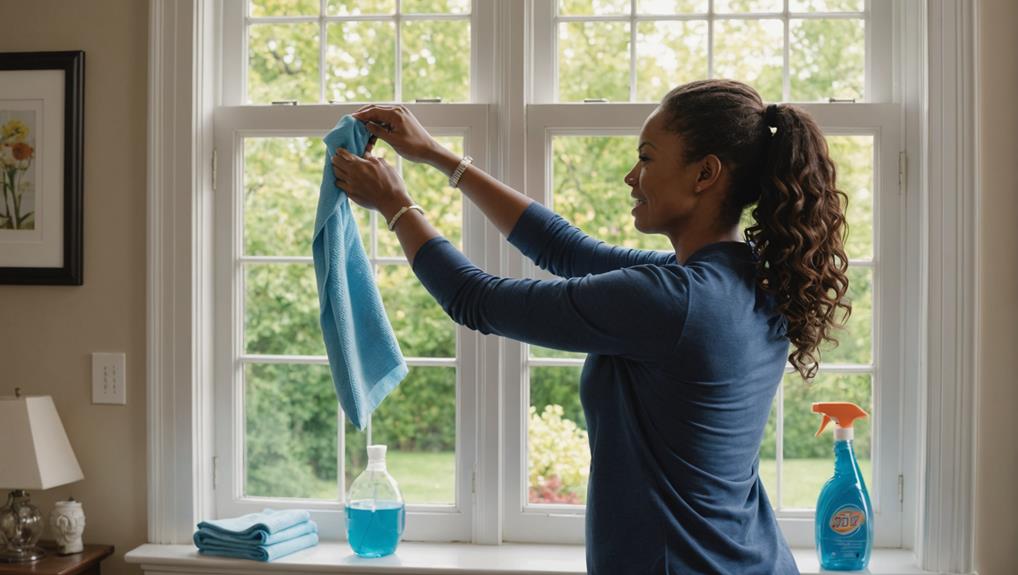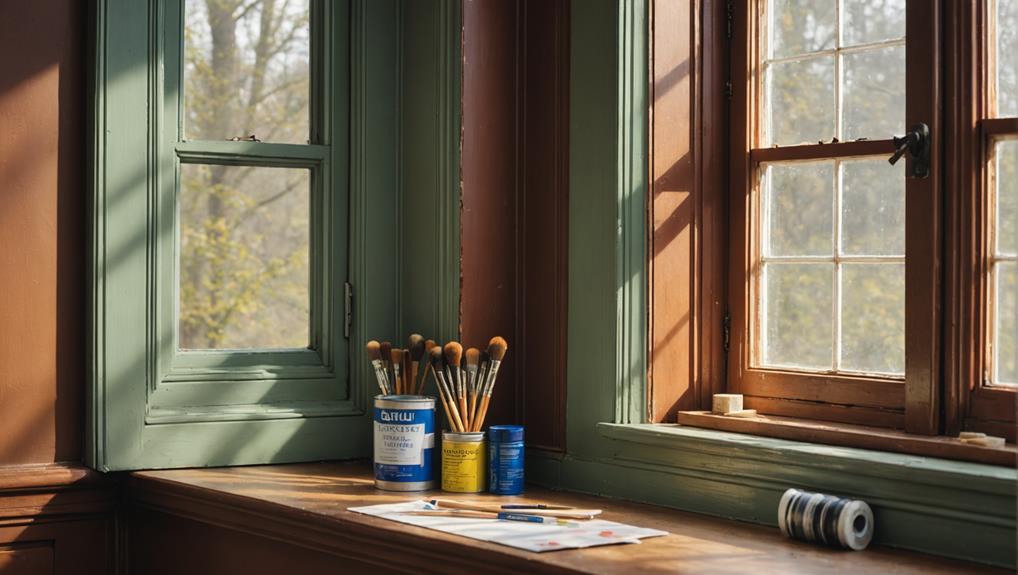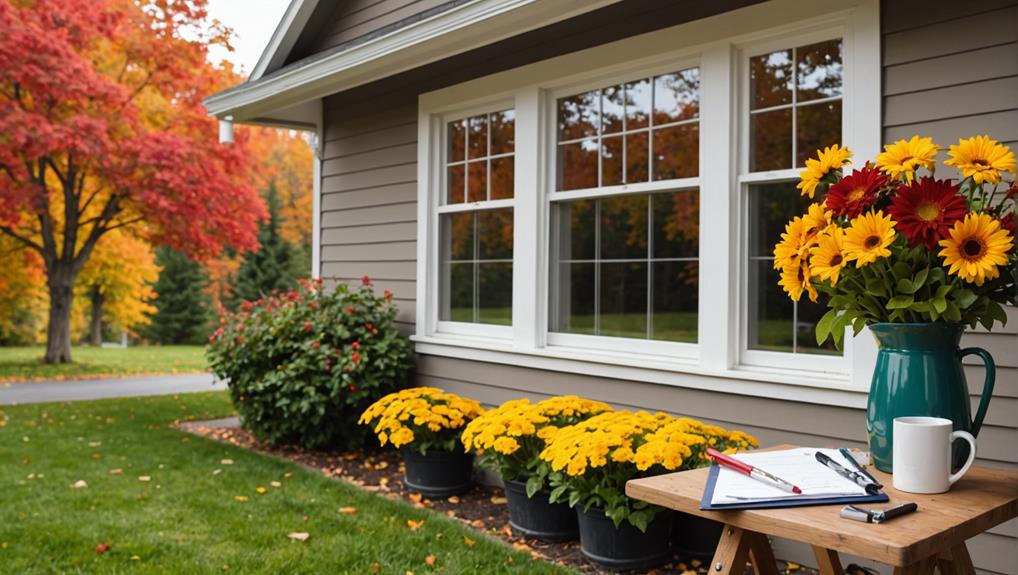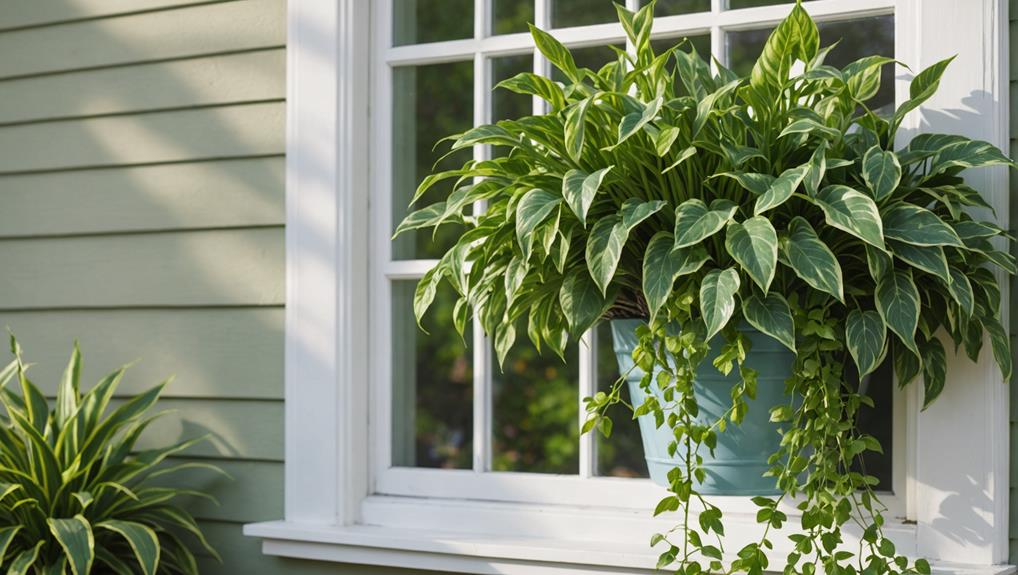To keep your window trim looking great and protected, start with regular cleaning using a microfiber cloth and gentle cleaner. Dust from top to bottom and pay extra attention to corners. Inspect for damage like cracks and peeling paint, as these can lead to bigger issues. When repainting, choose high-quality paint and suitable finishes for your indoor or outdoor trim. Don’t forget to caulk gaps with a weather-resistant product to seal against drafts. Seasonal maintenance is key; check for moisture and debris, so your trim stays in top shape all year. Discover more tips to enhance your home’s appeal!
Regular Cleaning Techniques

To keep your window trim looking its best, regularly dust and clean it with a gentle solution. Start by gathering your cleaning supplies. You’ll need a soft microfiber cloth, a gentle all-purpose cleaner, and possibly a small sponge for those hard-to-reach areas.
When it comes to dusting techniques, always begin at the top of the trim and work your way down. This method prevents dust and debris from falling onto already cleaned surfaces. Lightly moisten your microfiber cloth with the cleaner—don’t soak it—and gently wipe the trim. For any corners or crevices, use the sponge to guarantee you remove all the dust.
If you notice stubborn spots, let the cleaner sit for a minute before wiping it away. Make sure to rinse your cloth frequently to avoid spreading dirt around. After cleaning, dry the trim with a fresh cloth to prevent moisture from settling into any cracks or joints.
Inspecting for Damage
After cleaning your window trim, take a moment to inspect it for any signs of damage like cracks, chips, or peeling paint. This damage assessment is vital for maintaining the integrity of your trim and preventing further deterioration.
Here’s what to look for:
- Cracks: Tiny fissures can expand over time, leading to bigger problems.
- Chips: Missing pieces not only affect appearance but can expose the wood to moisture.
- Peeling Paint: This indicates that the protective layer is compromised, inviting rot or insect damage.
- Warping: Distorted trim can signal water damage and misalignment.
Once you’ve identified any issues, consider your repair options. Small cracks could be filled with wood filler, while larger chips might require replacement pieces.
If the paint is peeling, scraping and repainting might be necessary to restore protection. For warped trims, you may need professional help to realign or replace them entirely.
Regular inspections and timely repairs can save you from more extensive damage down the line. Keep your window trim in top shape by staying vigilant about its condition!
Choosing the Right Paint

Choosing the right paint for your window trim is vital to confirm durability and enhance your home’s aesthetic.
Start by considering the paint finishes available. For indoor trims, a satin or semi-gloss finish works well, offering a sleek look while being easy to clean. If you’re painting exterior trim, opt for a gloss or high-gloss finish, which provides better protection against the elements and adds a striking shine.
Next, think about color selection. Neutral colors, like whites and grays, are timeless and can complement any home style. However, don’t shy away from bold shades if you want your trim to stand out. Just make sure that it harmonizes with your home’s overall color scheme.
Additionally, always test your chosen paint on a small area first. This allows you to see how the color looks in different lighting conditions and guarantees you’re happy with the finish.
Caulking and Sealing
Caulking and sealing your window trim is crucial for preventing drafts and moisture from damaging your home. A proper seal helps maintain energy efficiency and protects your interior from the elements. Here’s how to get it right using the right caulking materials and sealing techniques:
- Choose the Right Caulk: Look for high-quality, weather-resistant caulking materials like silicone or polyurethane, which provide excellent adhesion and flexibility.
- Clean the Surface: Before applying caulk, thoroughly clean the area around the trim. Remove any old caulk, dust, and debris to guarantee a strong bond.
- Apply Evenly: Use a caulking gun to apply a steady bead of caulk along the seams. Make sure you fill gaps completely for maximum protection.
- Smooth the Seal: After applying the caulk, use a wet finger or a smoothing tool to create a neat finish. This not only looks better but helps enhance the seal.
Seasonal Maintenance Checklist

A seasonal maintenance checklist is vital for keeping your window trim in top condition and preventing potential issues throughout the year. Start by inspecting your trim materials for any signs of damage, such as rot or warping. Depending on the weather considerations in your area, you may need to address these issues more frequently.
In spring, check for moisture buildup and mold. Clean your trim with a gentle soap solution, and repaint or reseal if necessary.
Summer is a great time to apply a fresh coat of paint, especially if your trim is exposed to harsh sunlight.
As the leaves fall in autumn, clear debris from your window sills and inspect for any cracks that may have developed. This is vital for preventing winter drafts.


Leave a Reply